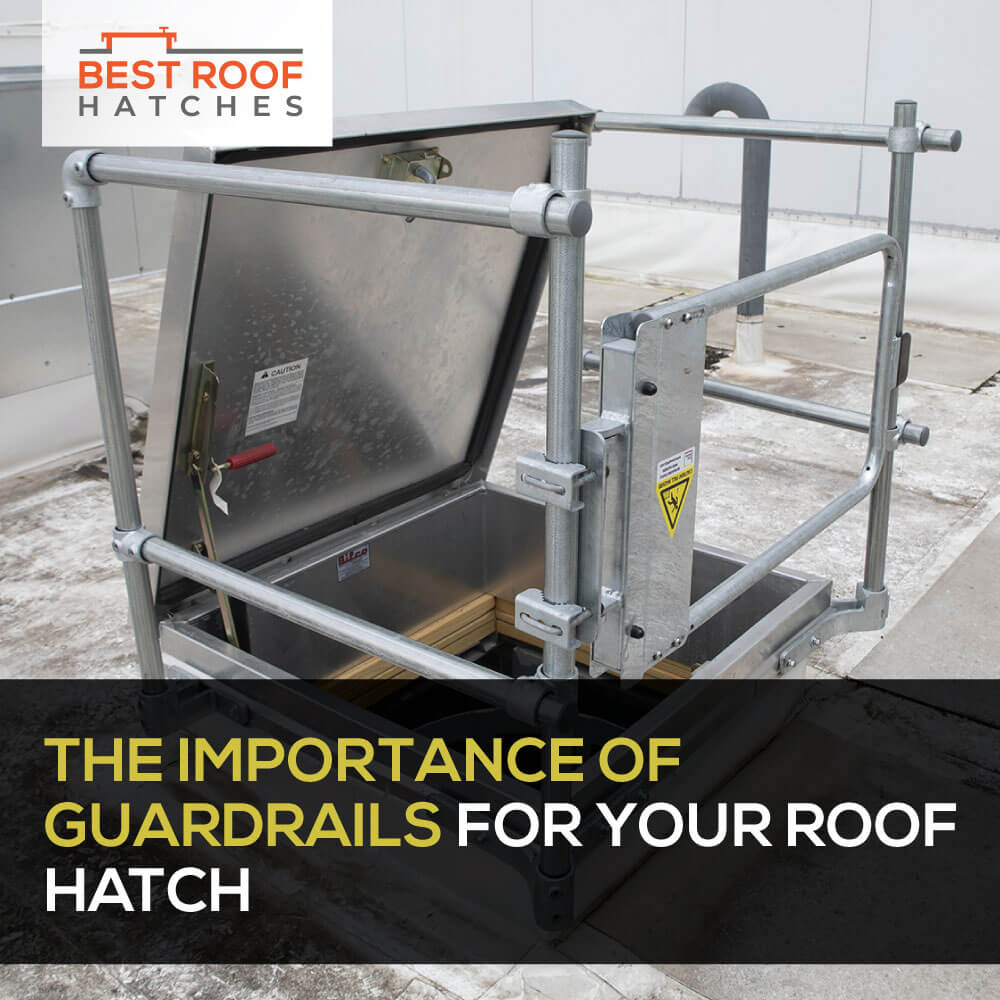Share this
The Importance of Guardrails for Your Roof Hatch
Posted by Best Roof Hatches on 2021 Aug 18th
Building owners can miss the importance of installing guardrails for roof access hatches when overlooking fall danger. Someone may feel safe from the hole it protects when it is closed, but what happens if the hatch door is left open? This thinking must alter to establish a safer culture. So, where do we start with this transformation? Understanding what is required is the first step.
Interesting Read: "3 Major Hazards to Avoid During Roofing Construction."
Why Protect Your Roof Hatch With Railings?
For starters, the hatch is a possible tripping hazard. In addition, you may be standing adjacent to another fall hazard, the roof edge, depending on the position of your roof hatch. Finally, safety is a must when considering the problematic twisting and climbing required to exit a hatch. These are just the primary reasons why guardrails and service stairs for roof hatches are necessary.
The Edge Is Dangerous
High gusts, slick conditions, uneven topography, and even reduced sight owing to reflective surfaces make roofs vulnerable. When initially stepping out of your roof hatch, you are steps away from a potentially fatal fall. If you're lucky enough to have an architect design your rooftop with the hatch in the middle, you'll still need to safeguard it, according to Occupational Safety and Health Administration (OSHA).
Using a solid hatch railing will prevent many risks. Hatch guardrails provide a secure hold bar when stepping down from your ladder. Furthermore, if you trip while reaching the hatch, the railing will prevent you from plunging back into the building, which would be an equally unpleasant plummet.
A guardrail installation must be around any roof hatch that provides access within 10 feet of a roof edge. The hatch itself is not the only threat for roof access but also the proximity to the roof edge. While municipal rules may stipulate that a guardrail installation should be within 10 feet, OSHA mandates that any access within 15 feet needs protection from a roof edge.
OSHA Regulations
According to OSHA, roof hatches are holes in your roof, 29 CFR 1910.28(b)(3). If the drop to the lower level is more than 4 feet, you'll need to use some fall protection. A hatch safety railing is a straightforward and most popular approach to protect a hatch—these bolts to the hatch's exterior frame, preventing any potential leaks. Pairing a self-closing safety gate, the consideration of the hatch is safe as per OSHA ruling.
Guardrail Protection: 1910.28(b)(3)(iv)
Protection from fall in the form of a guardrail is a requirement set by OSHA at every opening in the roof, including hatches, ladderways, and holes. On exposed sides of holes and hatches in the top, a guardrail is the only alternative. Despite being available sources of safety at the roof edge, personal fall arrest equipment and netting are insufficient.
Another crucial point to remember is how to secure entry. One can utilize a safety chain, and many hatch railing kits contain one. Unfortunately, in most states in the United States, this is not a feasible choice. One can also use a self-closing gate or an offset.
It's critical to understand the term "exposed sides." If the hatch door is tall enough in its open form, the side of the ladderway the hatch door opens onto is usually not considered an exposed side. In addition, the design of the door is to hide the hole if you fall on that side.
Railing Offset: 1910.29(b)(13)(ii)
The purpose of both the self-closing gate and the offset is to prevent falling hazards caused by the open hatch resulting in an accident. A self-closing safety gate eliminates the need for a break in the railing for complete protection, although it does necessitate user interaction to depart.
Although the offset prevents direct traffic, it allows access to an open hatch through a breach in the railing. Based on your personnel and the work environment, you'll have to decide which choice is best for you.
Navigating In and Out of the Hatch
It can be a challenge to get in and out of hatches. Climbing a ladder, opening the latch, pulling the door over your head, and then shimming out can be physically demanding. Just imagine wearing a complete set of tools and equipment that you need to transport to the roof.
Because of these dangerous places, OSHA code requirements, and the possibility to make a more effective work environment for your staff, it is critical to preserve your roof hatch. Installing a simple hatch guardrail with a safety gate is a simple, quick, and low-cost solution to all three of these problems.
Conclusion
Continued vigilance against these dangers in the workplace should be the primary focus of any building owner or manager to prevent injuries. If you find the guidelines confusing or want to know more in-depth details, never hesitate to consult a licensed professional who can give you their piece of solid advice.

